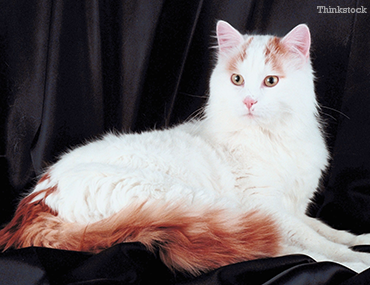Background:
The Turkish Van originated in the Lake Van region of Turkey. Two British women named Laura Lushington and Sonia Halliday were given two of these cats during a trip to Turkey in 1955. What they discovered was that these cats adapted well to traveling in cars, camp life, and swimming!
It wasn’t until the 1980s that Turkish Vans were brought the United States. They’re considered national treasures in Turkey.
Cat Facts:
- The Turkish Van almost always has a white coat with color on the head and the tail.
- The Turkish Van weighs 10-18 lbs.
- The Turkish Van generally lives between twelve and seventeen years of age.
- The Turkish Van loves water and has been given the nickname “the swimming cat.”
- The Turkish Van has what’s referred to as a “vinometer.” When their pretty pink nose begins to turn red your Van is not happy. The deeper the red, the more upset the cat.
What’s the Turkish Van like?
The Turkish Van is like a caravan, as in they’re always moving and are a very large cat. They love to jump and run on and off furniture and don’t always land on their feet. Definitely protect your breakables.
Because of their love for water you should keep toilet seats down and cover swimming pools. Vans just love to have fun!
Turkish Vans are typically very healthy; although, they could develop hypertrophic cardiomyopathy, which is the most common heart disease in cats.
Takeaway Points:
- The Turkish Van might not be the right cat for an especially orderly person. Their large stature and jumpy personality can create messes. Whether it’s jumping off your office desk, causing papers to go flying, or jumping off a table and spilling something -- these cats are definitely adventurous!
- The Turkish Van does not like being held or restrained, but he does enjoy cuddling up next to you and sleeping in your bed.
- A Van’s coat feels very similar to cashmere, but they’re very easy to groom. Simply running a comb through weekly will do.
- If you have allergies this cat can make them worse because they produce dander (although no breed of cat is better or worse for people with allergies).
If you have any questions or concerns, you should always visit or call your veterinarian -- they are your best resource to ensure the health and well-being of your pets.
![]()

